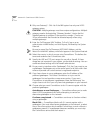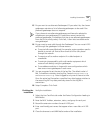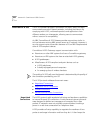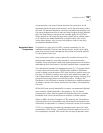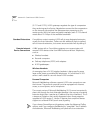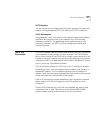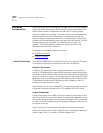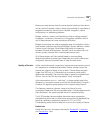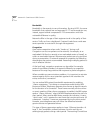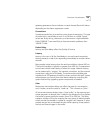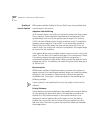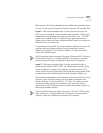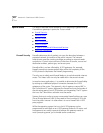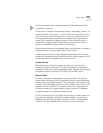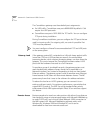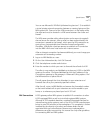
404 APPENDIX D: CONNEXTIONS H.323 GATEWAY
Bandwidth
Bandwidth is the capacity to carry information. By using H.323, the same
bandwidth that supports one uncompressed G.711 voice connection can,
instead, support several compressed G.723 conversations with little
noticeable difference in quality.
Networks differ in the age of their equipment and in the quality of their
service. Traffic can form a bottleneck if network loads force a wide area
service provider to route traffic through old equipment.
Congestion
Users notice congestion when audio “breaks up” during a call.
Congestion can occur anywhere on the network, for example, at an
overloaded LAN (local or remote), at an overloaded router or firewall, or
within an overloaded internet. Because voice packets are only significant
during a conversation, IP networks respond to congestion by discarding
data packets they cannot accommodate. Resending or delaying packets is
not an effective solution.
At the local level, congestion symptoms can be subtle. For example,
routers from different vendors can respond differently to congestion
because of the way they prioritize their response to packet congestion.
When considering communications problems, it is important to maintain
reserve capacity and to use a systematic approach that considers the
entire, end-to-end, connection.
You can reduce NBX system’s bandwidth requirements by enabling
“silence suppression,” but doing so compromises audio quality. NBX
Business and Basic Telephones generate voice frames at regular intervals
for the duration of a connection. These frames normally continue when
no one is speaking. When silence suppression is enabled, the NBX system
sends a “silence indicator” when the NBX Telephone senses the start of a
silent period. When another NBX device receives this indicator, it inserts
“white noise” until it receives the next frame that contains real voice. All
subsequent “voiceless” frames are suppressed during the silent period.
However, most telephone users will notice the difference between
genuine silence and generated silence.
This type of silence suppression applies to Layer 2 Ethernet transfers. At
Layer 3, the ConneXtions software achieves a similar result by not
sending empty packets during a silent period. The receiving ConneXtions



